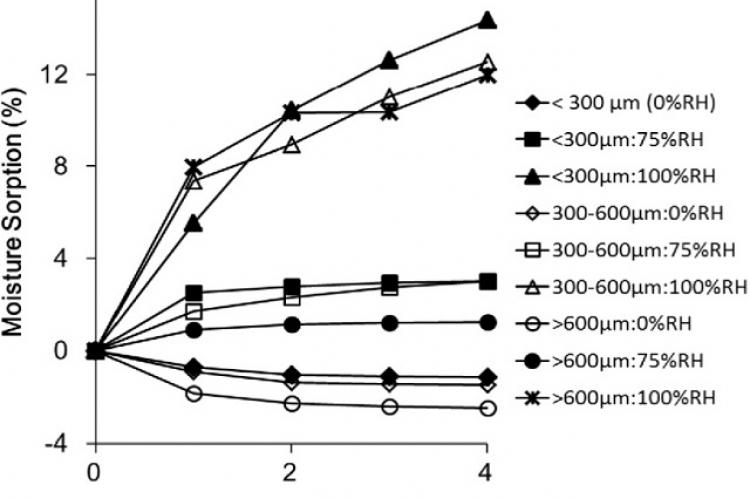The investigation studied the effect of particle size on the disintegrant activity of Pleurotus tuber-regium powder in comparison with maize starch BPand microcrystalline cellulose. P. tuber-regium sclerotia were processed into powders of different particle sizes (< 300, 300-600 and > 600 μm). The different size fractions were subjected to moisture sorption test. Magnesium trisilicate granules were formed with the different size fractions of P. tuber-regium powders, maize starch BP and microcrystalline cellulose and compressed into tablets. The granules and tablets were evaluated for their physicochemical properties. The moisture sorption capacity of the powdered fraction was of the order (< 300 μm) < (300-600 μm) < (> 600 μm). The granules and tablets formulated were comparable in granule flow properties, tablet weight variation, hardness and friability. However, tablets formulated with P. tuber-regium powder particle size > 600 μm performed better with a shorter disintegration time of 4.62 min against those of maize starch BP, 12.65 min and microcrystalline cellulose 11.20 min. Pluerotus tuber-regium powder compared favourably with maize starch BP® and microcrystalline cellulose (Avicel PH 102) when used as a disintegrant. It may therefore be inferred that P. tuber-regium may serve as a suitable disintegrant in compressed tablets especially at particle size equal to or greater than 600 μm, and where shorter disintegration times are desired.
View:
- PDF (754.57 KB)


